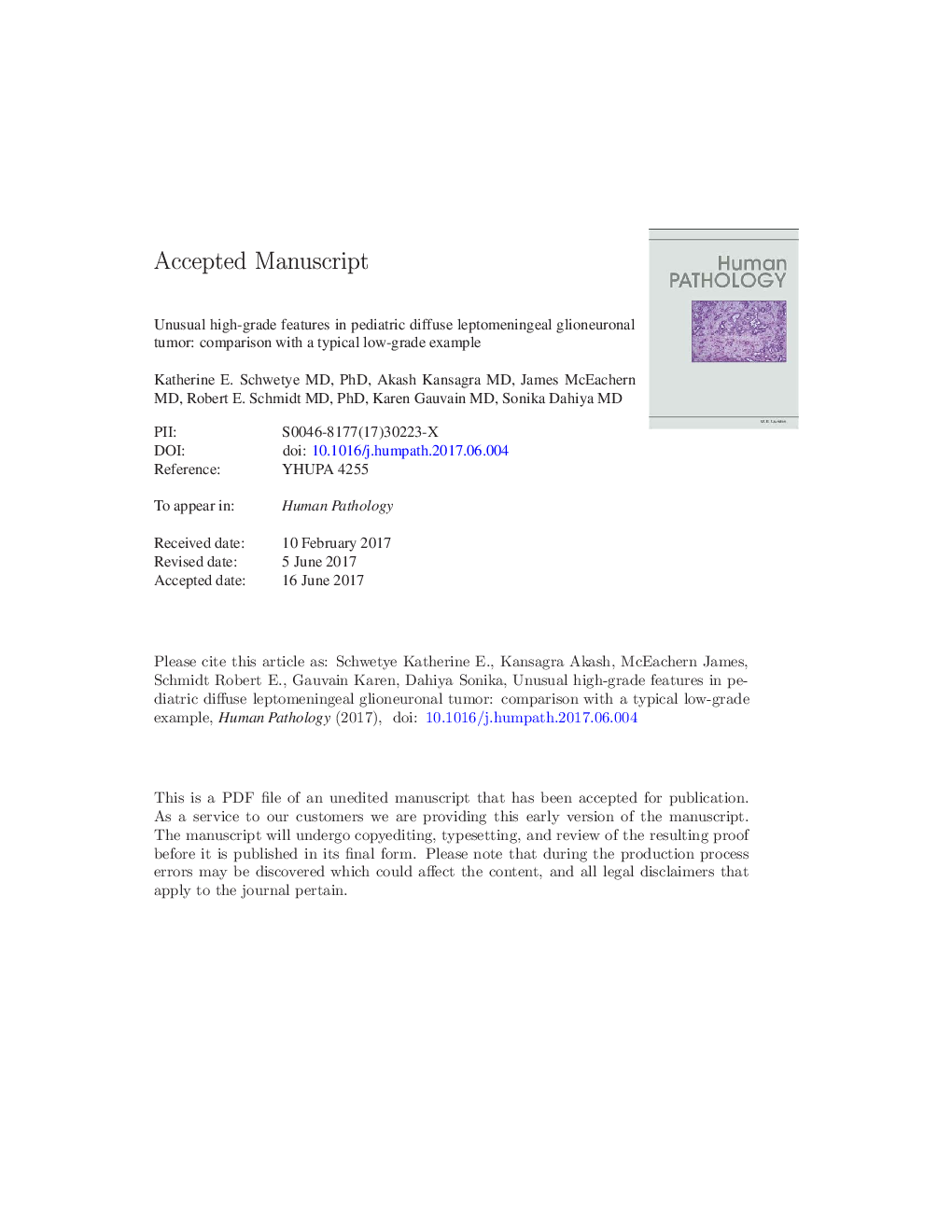| Article ID | Journal | Published Year | Pages | File Type |
|---|---|---|---|---|
| 8807722 | Human Pathology | 2017 | 21 Pages |
Abstract
Diffuse leptomeningeal glioneuronal tumor, a recent addition to the World Health Organization classification system, typically presents in the pediatric population with signs and symptoms related to elevated intracranial pressure and imaging characteristics that may mimic infectious etiologies. The tumor is usually low grade and tends to harbor BRAF rearrangement/duplication in up to 75% of cases, BRAF V600E mutation in a smaller subset of cases, and loss of chromosomal arm 1p in approximately 50%-60% of cases, with ~20% of those showing loss of both 1p and 19q (codeletion). We report here 2 contrasting cases of diffuse leptomeningeal glioneuronal tumors, one with typical low-grade features and an indolent, although not benign, course, in which the disease is currently successfully managed by chemotherapy, and a second case with unusually high-grade features on initial presentation, including frank anaplasia and elevated mitotic index, in which the disease showed an initial response to chemoradiation but ultimately was fatal.
Related Topics
Health Sciences
Medicine and Dentistry
Pathology and Medical Technology
Authors
Katherine E. MD, PhD, Akash P. MD, James MD, Robert E. MD, PhD, Karen MD, Sonika MD,
